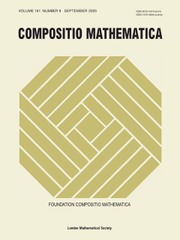Crossref Citations
This article has been cited by the following publications. This list is generated based on data provided by Crossref.
Abe, Tomoyuki
and
Marmora, Adriano
2015.
Product formula forp-adic epsilon factors.
Journal of the Institute of Mathematics of Jussieu,
Vol. 14,
Issue. 2,
p.
275.

